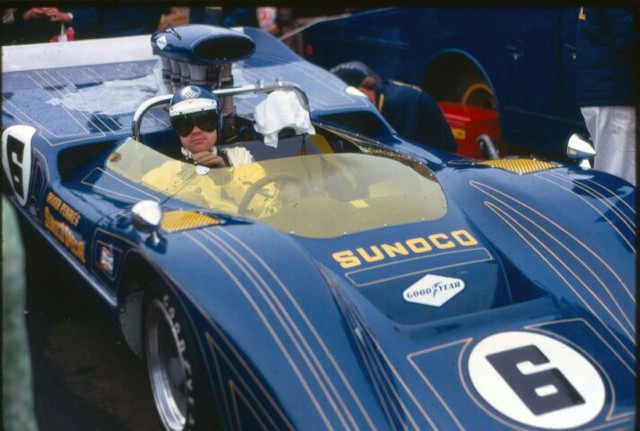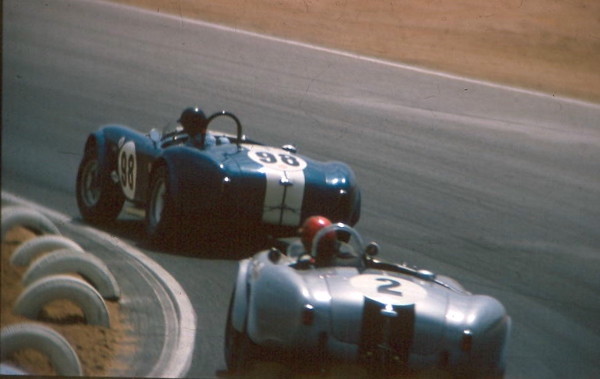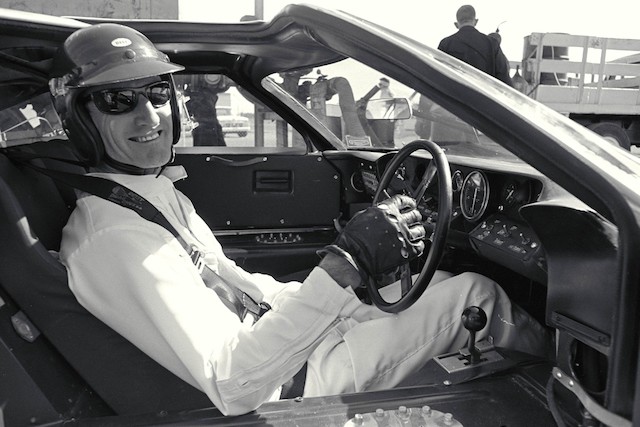By Peter M. DeLorenzo
Detroit. Beginning in the late 50s and running through the mid-70s, sports car racing - particularly here in the U.S. - was captivated and dominated by V8-powered machines that barked their intent at race tracks all over the country. Sure, back in those days, SCCA (Sports Car Club of America) events were heavily populated by small-bore sports cars like Austin-Healeys, Triumphs, MGs, Minis, 356 Porsches and many other brands. And there was no question that they provided the backbone of SCCA racing back then. But starting in the late 50s with race-prepared Corvettes, and then fueled by the emergence of the Shelby American Cobra, and on to the USRRC, Trans-Am and Can-Am days, the real action was with the big-bore machines.
I vividly remember seeing the crowds gravitate to the fences when those V8s fired-up on the false grid. They couldn't really help it, because the sound was guttural, menacing and mesmerizing all at once. Standing among those cars on false grids all over the Midwest with our "A" Production Corvettes - Waterford Hills, Grattan, Mid-Ohio, Nelson Ledges, Milwaukee, Blackhawk Farms and, of course, Road America - was an in-period treat that I couldn't get enough of and will never forget. And besides the spectacular noise coming from those machines, the sheer speed was awesome to behold as they devoured every race track they visited.
And the legendary names that wheeled these machines were a mix of Hall of Famers and hard-scrabble drivers who wouldn't settle for anything less than the fastest, baddest V8s available. The legends were present and accounted for: Ken Miles, Dan Gurney, Roger Penske, Mario Andretti, Jim Hall, Bruce McLaren, Denny Hulme, Jackie Stewart, Peter Revson, John Surtees, Parnelli Jones, George Follmer, Mark Donohue, Swede Savage, Sam Posey, Milt Minter, Ed Leslie, Dr. Dick Thompson ("The Flying Dentist"), Allen Grant, Jerry Grant, et al. And, of course, my brother Tony and his teammate Jerry Thompson. This list of drivers - which I have affectionately dubbed "The Muscle Boys" - were just the tip of the iceberg. There were countless others who wheeled and manhandled their brutal machines at tracks all across the country. They were visceral, no-compromise machines that captivated the hearts and minds of racing enthusiasts, and if you've ever been to a vintage racing event, the same is true today, if not more so. I hope you enjoy the following images and recollections as much as I do.
And that's the High-Octane Truth for this week.
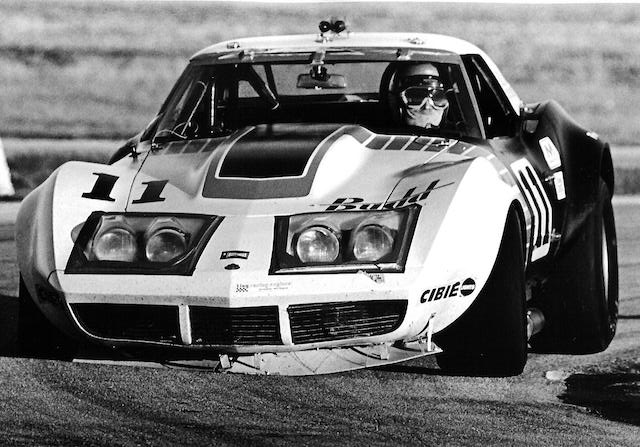
(Photo by Hal Crocker/The DeLorenzo Collection)
Daytona 24 Hours, February 4, 1973. Tony DeLorenzo turns on to the banking in the No. 11 Troy Promotions Inc/Budd Chevrolet Corvette. Nicknamed "The Monster" because of its 467 cu. in. V8 that was a torque monster, the No. 11 Corvette was built on every lesson learned from the previous Owens/Corning Corvette Racing Team days, plus it bristled with many new ideas that made it the fastest Corvette of its day. Tony qualified sixth behind the Derek Bell/Howden Ganley No. 1 Gulf Racing Mirage M6-Ford; the No. 3 Equipe Matra-Simca Matra MS670 driven by Francois Cevert/Jean-Pierre Beltois/Henri Pescarolo; the No. 2 Gulf Racing Mirage M6-Ford driven by Mike Hailwood/John Watson; the No. 12 Scuderia Filipinetti Lola 282 Ford of Reine Wissell/Hughes de Fierlant/Jean-Louis Lafosse and the No. 19 Porsche 908/02 driven by Rudy Bartling/Harry Bytzek/Bert Kuehne. But qualifying was deceiving, because "The Monster" was actually faster - at 200 mph+ - than the prototypes on the banking and during the opening laps Tony passed two cars and stayed comfortably with the four leaders for many laps. Unfortunately, the engine blew during the race. “The Monster” Corvette had been designed, engineered, built and executed by some of the best minds in the business at that fleeting moment in time. It was a stunning piece of work. And even though things didn’t work out the way we wanted them to, it was worth each and every memorable moment.
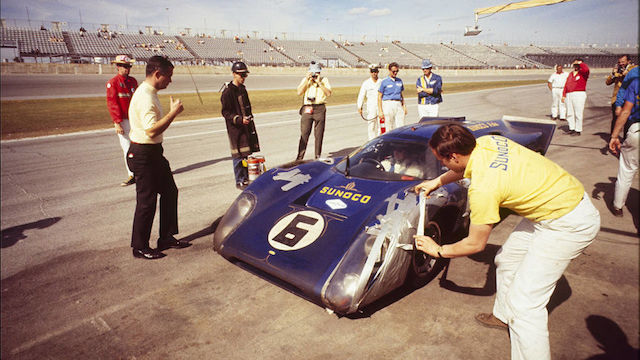
(Getty Images)
Daytona 24 Hours, February 2, 1969. Roger Penske signals the battered and bruised No. 6 Roger Penske Racing SUNOCO Lola T70 Mk.3B GT Chevrolet out of the pits toward the end of the race. The damaged machine was driven by Mark Donohue and Chuck Parsons to a 30-lap victory in the race.
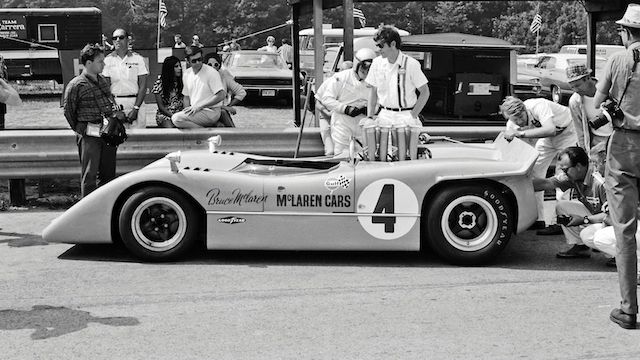
(Getty Images)
Road America, Elkhart Lake, Wisconsin, August 31, 1968. Bruce McLaren stands next to the No. 4 Gulf McLaren M8A Chevrolet in the pits during practice for the Can-Am, which would be run in heavy rain for part of the race the next day. Bruce qualified on pole with a time of 2:09.800 and his teammate, Denny Hulme (No. 4 Gulf McLaren M8A Chevrolet) qualified second with a 2:09.900. Jim Hall (No. 66 Chaparral 2G Chevrolet) started third with a time of 2:10.800, followed by Mark Donohue (No. 6 Roger Penske Racing Ent. SUNOCO McLaren M6B Chevrolet) with a 2:11.00. Hulme won, followed by McLaren, Donohue, Peter Revson (No. 52 Shelby Racing Co. McLaren M6B Ford) and Hall. The secret to McLaren's success - besides the fact that they were blistering fast - is that Bruce stressed testing, testing and more testing; and by the time the team showed up for the races they were better prepared than any other team in the paddock. The results spoke for themselves.
(Getty Images)
Road America Can-Am, Elkhart Lake, Wisconsin, September 1, 1968. Mark Donohue sits in the beautiful No. 6 Penske Racing Ent. SUNOCO McLaren M6B Chevrolet before the start. Mark would finish third that day behind Denny Hulme and Bruce McLaren in their McLaren M8A Chevrolets.
(Dave Friedman)
Riverside International Raceway, May 2, 1965. Ed Leslie, driving the No. 2 Shelby American Cobra, chases Ken Miles (No. 98 Shelby American Cobra) during a United States Road Racing Championship GT race. Miles won, followed by Scooter Patrick (No. 34 Porsche 904 GTS) and Bob Johnson (No. 97 Shelby American Cobra). Leslie did not finish the race.
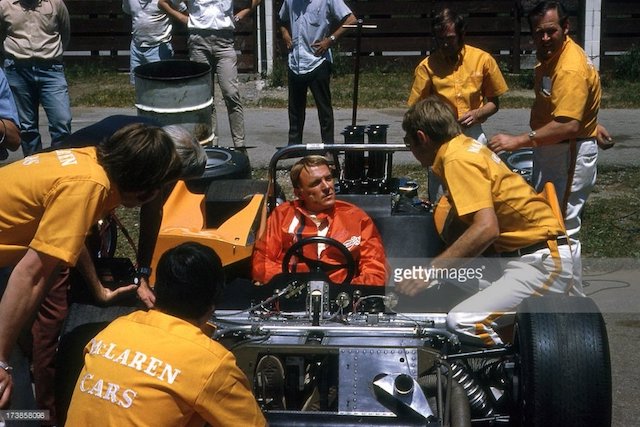
(Getty Images)
Mosport, June 13, 1970. Dan Gurney sits in the No. 48 Gulf/Reynolds Aluminum McLaren M8D Chevrolet during practice for the Can-Am that would run the next day. Gurney was recruited by the McLaren team after the tragic death of its founder - Bruce McLaren - during testing of the M8D at Goodwood in England on June 2. Gurney and McLaren were good friends. McLaren had driven one of Dan's Eagles in F1 and Gurney had made an appearance in a McLaren Can-Am car at the Michigan International Speedway in 1969, finishing third behind Bruce and Denny Hulme in a guest drive. Dan was considered the best man to step in for Bruce, and Dan promptly put his McLaren on the pole and won the race. He would accomplish the same feat two weeks later in the Can-Am Mont-Tremblant at St. Jovite.
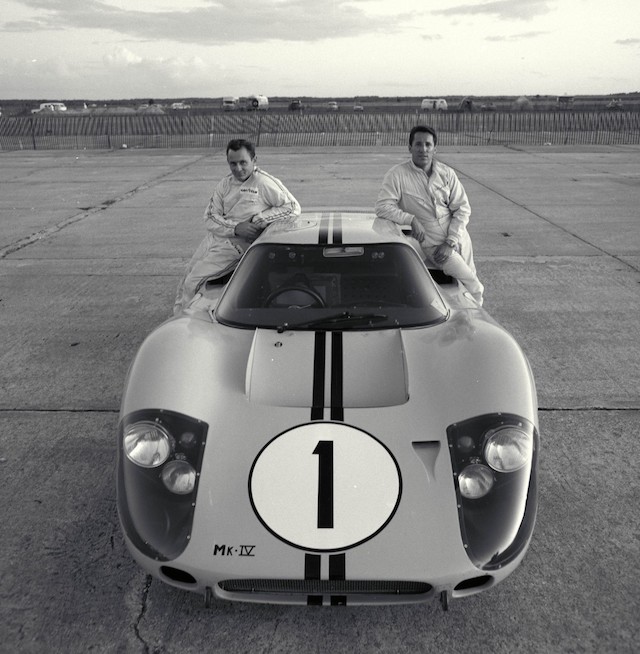
(Dave Friedman)
Sebring, March 30, 1967. Bruce McLaren and Mario Andretti with the No. 1 Ford Mk IV before the 12 Hours of Sebring. Mario put the machine on pole by 2.5 seconds and the pair dominated the race - which was run on April 1 - winning by twelve laps. The Ford Mk IV was entered in only two races in 1967 - the 12 Hours of Sebring and the 24 Hours of Le Mans - and won both of them.
(Dave Friedman)
Daytona International Speedway, February 1966. Ken Miles sits in the No. 98 Shelby American Ford Mk II that he shared with Lloyd Ruby during practice for the Daytona 24 Hours. Miles and Ruby led a momentous 1-2-3 sweep for Ford, winning by eight laps. Dan Gurney/Jerry Grant (No. 97 Shelby American Ford Mk II) were second, and Walt Hansgen/Mark Donohue (No. 95 Holman & Moody Ford Mk II) finished third.
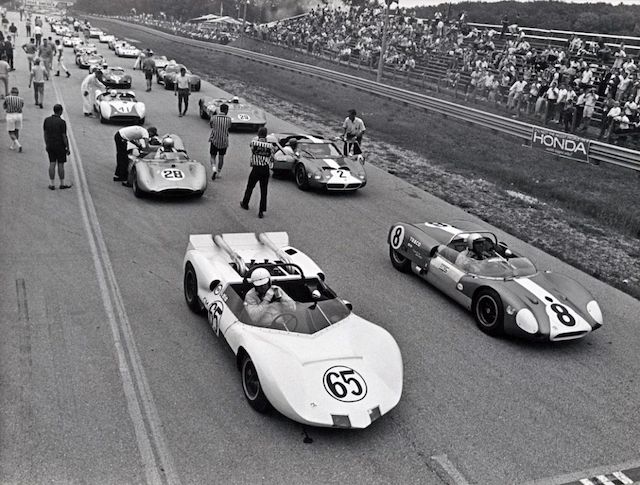
(Getty Images)
Elkhart Lake, Wisconsin, June 21, 1964. The June Sprints at Road America was one of the SCCA's biggest race weekends of the year. And this just in: It still is. This is a shot of the "C Modified" (CM) starting grid that day. The race also included the smaller DM, EM and FM classes, but the big-bore machines qualified up front and were the stars of the show. On pole was the No. 65 Chaparral 2A Chevrolet driven by Hap Sharp. Why was the Chaparral Cars team at Road America for an SCCA National race? They were using it as a tune-up for the upcoming Road America 500 in the fall. Next to Sharp was Walt Hansgen in the No. 8 John Mecom Racing Team Lotus 19B Ford. Other notables included Augie Pabst in the No. 2 Mecom Racing Team Lola Mk.6 GT Chevrolet and Ralph Salyer in the No. 26 Cheetah-Chevrolet Cro-Sal Special. Sharp and Hansgen did not finish, while Pabst encountered issues and finished seventh. The race was won by Salyer.
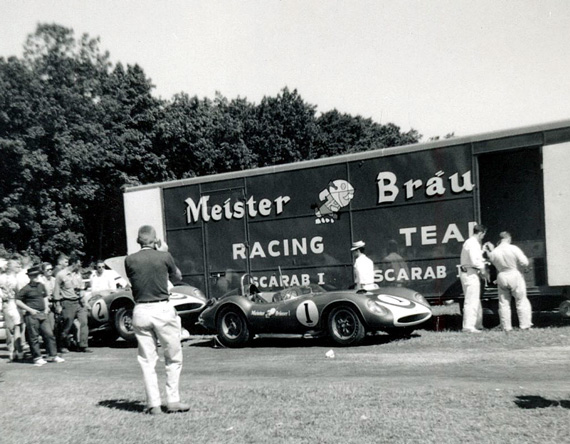
(Getty Images)
Elkhart Lake, Wisconsin, June Sprints, 1960. The No. 1 Meister Brauser Scarab Mk II Chevrolet was entered in the "B Modified" class with Augie Pabst driving. The No. 2 Meister Brauser Scarab Mk II Chevrolet would be driven by Harry Heuer. Pabst would win the race overall. The Meister Brauser Racing Team was a star fixture in SCCA racing in the late 50s and early 60s. Meister Brau beer was a popular brew in the Midwest back then, and it was produced by the Peter Hand Brewery in Chicago. An interesting side note? The Peter Hand Brewery came up with the original idea and formula for "Lite" beer. The brewery was purchased by the Miller Brewing Company in order to acquire that "Lite" beer formula, which is where Miller Lite came from. Another interesting side note? My uncle, Charles DeLorenzo, was in charge of marketing for the Peter Hand Brewery. A third interesting side note? Dr. Dick "The Flying Dentist" Thompson finished second to Pabst driving the No. 11 1959 Corvette Sting Ray racer entered - and owned - by none other than Bill Mitchell, head of GM Styling.

When Mo Carter and Tony DeLorenzo stomped the IMSA field at Pocono in their big-block Camaro, it was a huge deal back in the day.
Editor's Note: You can access previous issues of AE by clicking on "Next 1 Entries" below. - WG
 Sunday, March 24, 2024 at 07:59AM
Sunday, March 24, 2024 at 07:59AM 


